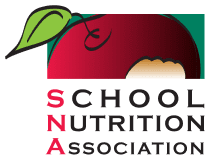June/July 2020
School Nutrition: Support Today’s Kids
SY2019-20 will go down in the history books as an incredibly interesting school year. With the abrupt disruption, closures and cancellations that the COVID-19 pandemic brought, students of all grade levels felt the effects, from toddlers to graduating seniors. How each age group was affected is also dependent on many variables including socioeconomic status, race, citizenship, special needs and more.
Log into your SNA account and scroll down to read this month's articles, view the digital issue or download a PDF of the magazine to print or share. Here's what's covered:
Because of the pandemic, kids today are facing unprecedented challenges and many education and child development experts are wondering what the long-term impact will be. To help get a better understanding of the barriers children and teens now face, School Nutrition took a deep dive into what childhood looks like in a COVID-19 landscape.
These uncertain times are anxiety inducing for all children— and adults! But with the right guidance, children can learn how to overcome this unprecedented situation to build resilience and be future heroes. Whether you have a toddler, elementary school student, tween or graduating senior in your home (or have one in your life), they have all been greatly affected by school closures and event cancellations. With the right tools, you can answer their questions and ensure they have support—both educationally and emotionally. Children with special needs and children in foster care (and their supporting families) have been disproportionately affected by the pandemic. However, there are ways to support these children to ensure they do not fall behind and retain the care they need.

Get Access to School Nutrition
If you're an SNA member, sign in now to read the articles. If you are not a member, join to get access to all of the great content in School Nutrition!
Become an Advertiser
Gain the Competitive Edge with School Nutrition Magazine
As the premier publication for the school nutrition profession, School Nutrition magazine is SNA members’ go-to resource for information, inspiration and innovative ideas on important issues, both in and out of the cafeteria. By advertising, you’ll not only promote your products and services to this important market segment via a reputable national magazine, you’ll also be part of the movement to provide healthy meals to America’s students.

